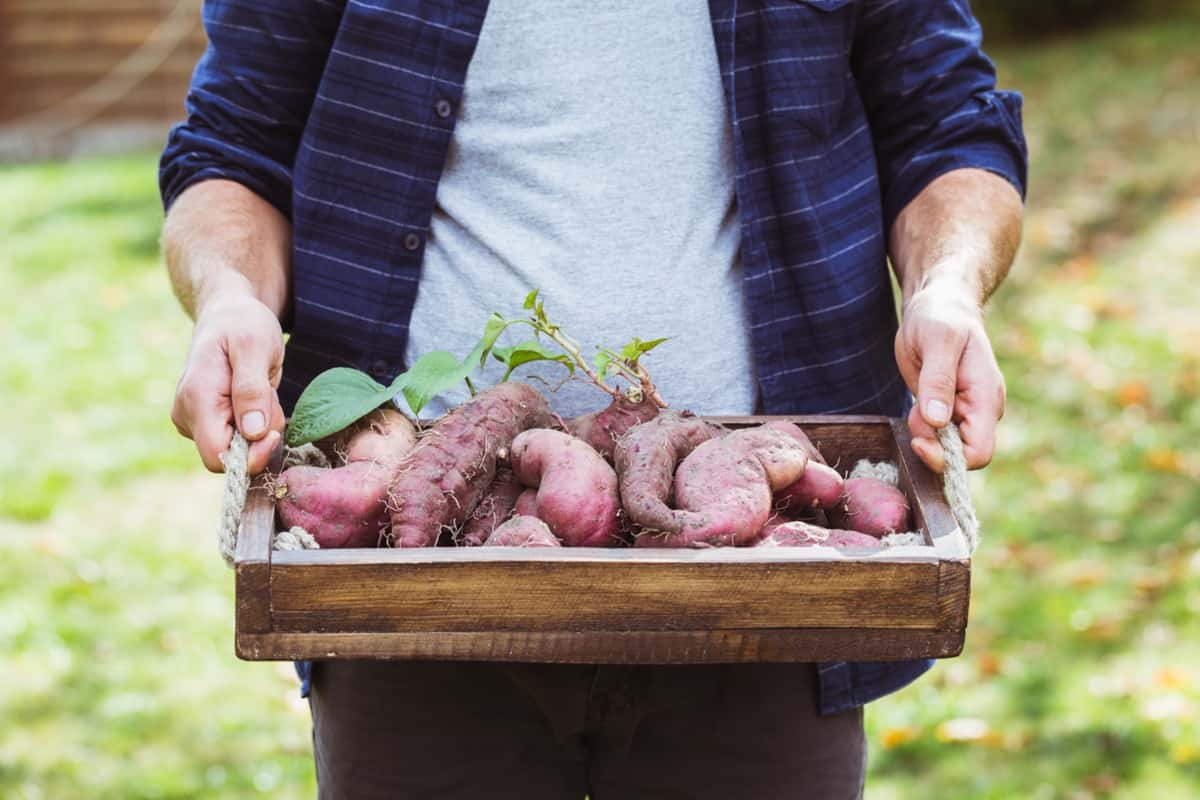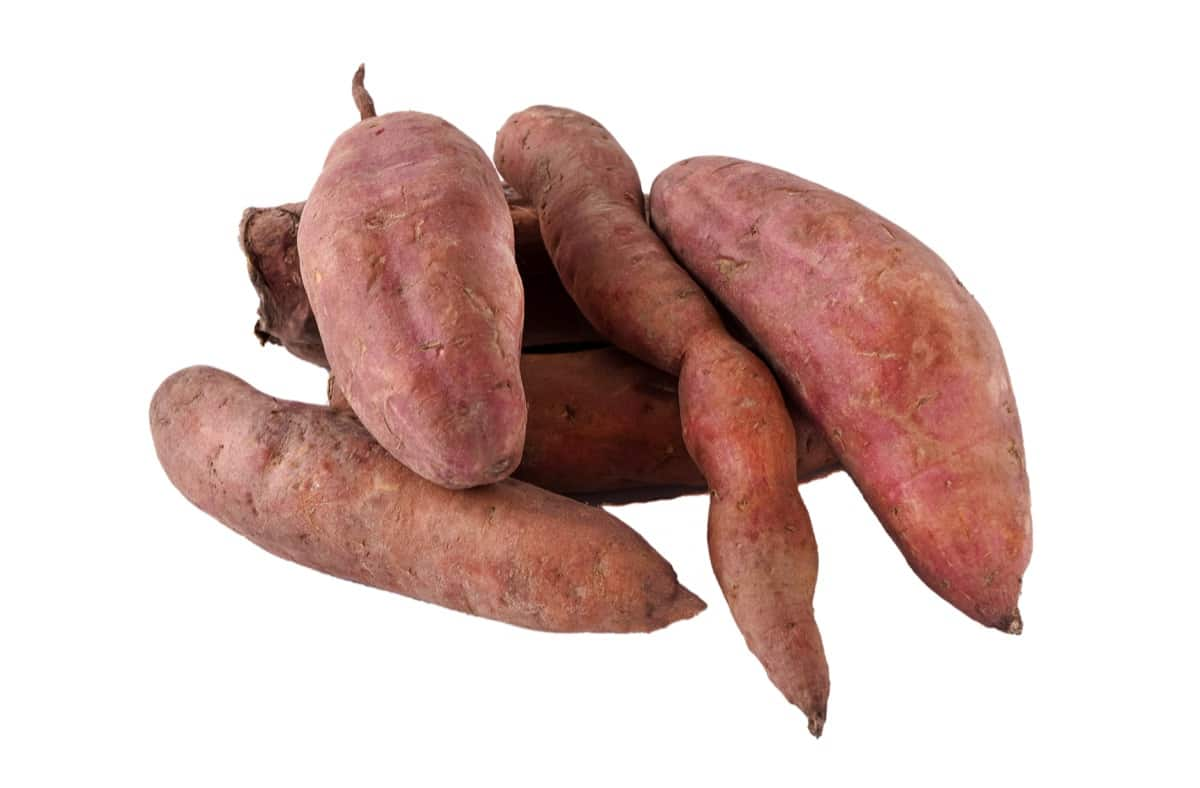Sweet potato farming can be a profitable venture with careful planning and analysis. This report aims to provide an economic analysis and project report for a one-acre sweet potato farm. It will delve into the costs involved in establishing and maintaining the farm and the potential profits that can be achieved. By examining the economics of sweet potato farming, this report will assist farmers in making informed decisions and maximizing their returns.

What is Sweet Potato Farming?
Sweet potato plants are characterized by long trailing stems and leaves that can be lobed or unlobed, exhibiting various shapes. The flowers, found in clusters amidst the leaves, possess a funnel-shaped structure with shades of pink or rose-violet. The tuberous root is the edible part, which can be fusiform, oblong, or pointed oval in shape. The roots display various colors, including white, orange, and sometimes purple on the inside and light buff, brown, rose, or purplish red on the outside.
The starchy pulp primarily comprises starch, while orange-fleshed varieties boast high carotene content. The plant is propagated through sprouts called slips or vine cuttings, and it thrives best in loose, sandy loam soils. Actual yields necessitate a warm climate for at least four to five months.
Market and Demand for Sweet Potato Farming
As per a report by Industry Growth Insights, the global sweet potato starch market is projected to exhibit a CAGR of 4.5% until 2030, reaching a value of USD 1.2 billion. The market’s growth is increasing by the demand for nutritious food and growing awareness regarding the health benefits of sweet potatoes. Data Bridge Market Research forecasts that the sweet potatoes market will reach USD 50,534.33 million by 2029, with a CAGR of 5.9%. However, the high prices of sweet potatoes may hinder market growth.
The market for sweet potato fries is expected to grow at a CAGR of 5.3%, increasing revenue from USD 1,527.20 million to around USD 2,511.44 million by 2033. In 2020, the global sweet potato market was valued at approximately USD 42.75 billion, with an estimated forecast of USD 45.7 billion by 2025.
Best High-Yielding Variety for Sweet Potato Farming
- ‘Beauregard’ (90 days): This variety has red-orange skin and orange flesh. It is known for its quick maturity, high yields, and resistance to cracking.
- ‘Bush Porto Rico’ (110 days): With copper skin and sweet, moist, deep orange flesh, this variety is an excellent choice for baking. It is also a space-saving option.
- ‘Centennial’ (100 days): This variety features copper-orange skin and fine-grained, soft orange flesh. It is a leading variety in the U.S., offering high yields and good storage capabilities.
- ‘Georgia Jet’ (90 days): Known for its red skin and moist, deep orange flesh, this variety is particularly suitable for fast growth, making it ideal for northern regions.
- ‘Jewell’ (100 days): With copper skin and moist orange flesh, ‘Jewell’ produces shapely roots and is known for its vigorous vines and good storage qualities.
- ‘Vardaman’ (110 days): This bush variety stands out with its golden yellow skin and deep red-orange flesh. It also features unique purple foliage.
- ‘White Yam’ (100 days), also known as ‘White Triumph’: With white skin and dry white flesh, this variety is one of the oldest types of sweet potatoes. It grows on compact vines.
Best Package and Practices for Sweet Potato Farming
Soil: Sweet potatoes thrive in loamy soil with a pH of 5.6 to 6.6. This soil provides good drainage and aeration, allowing the roots to develop properly. Ensuring the soil depth is at least 30 cm to accommodate root growth is important.
Season: The ideal time for planting sweet potatoes is June-July and September. These months offer warm and moist conditions, which are favorable for the growth and development of the crop.
Preparation of Field: To prepare the field, plow it to a fine tilth, ensuring that the soil is well-pulverized. Ridges and furrows should be formed at a spacing of 60 cm apart. Alternatively, sweet potatoes can also be grown in beds.
Preparation of Cuttings: Cuttings for planting should be obtained from mature vines at least three months old. The cuttings should be 12-15 cm long and have 2-3 nodes. Before planting, dip the vine cuttings in a solution containing 400 g of Azospyrillum mixed with adequate water. This helps in promoting root development and overall plant growth.
Planting: Plant the terminal vine cuttings at a spacing of 20 cm, with approximately 80,000 cuttings per hectare. This spacing allows the plants to receive sufficient sunlight and airflow while maximizing the use of available land.
Irrigation: Proper irrigation is crucial for sweet potato cultivation. Irrigation should be done before planting, again on the third day after planting, and subsequently once a week. However, irrigation should be stopped one week before harvest to prevent excess moisture in the soil, which can lead to tuber rotting.
Application of Fertilizers: For optimal growth, apply 25 tons per hectare of farmyard manure (FYM) as a basal application. As for chemical fertilizers, apply 20:40:60 kg NPK (nitrogen, phosphorus, and potassium) per hectare as a basal dose. After 30 days of planting, apply another round of 20:40:60 kg NPK per hectare. If 20 kg per hectare of Azospirillum is applied, reduce the N dose to 2/3rd. It is advisable to use Diammonium phosphate (DAP) as the source of nitrogen and phosphorus.
After Cultivation: Regular weeding is essential to keep the field clean until the vines are fully developed. Earthing up, which involves piling soil around the base of the plants, can be done on the 25th, 50th, and 75th day after planting. This practice helps in root development and prevents root formation at the nodes. Ethrel, a plant growth regulator, can be sprayed five times at 250 ppm at fortnightly intervals, starting 15 days after planting.
In case you missed it: How to Grow and Care for Sweet Pea Flower: Planting Instructions for Best Blooms

Plant Protection: Sweet potato weevil is a common pest that can infest sweet potato crops. To control its spread, removing previous crop residues and destroying alternate hosts such as Ipomoea sp. Using pest-free planting materials and treating them with Fenthion 100 EC or Fenitrothion 50 EC before planting can also help.
Raking the soil, earthing up 50 days after planting, and drenching the soil with Fenthion 100 EC at two ml/l are additional preventive measures. In case of severe infestation, appropriate insecticides can be sprayed, and the crop should be harvested immediately after maturity, followed by the destruction of crop residues.
Project Report of 1-Acre Sweet Potato Farming
The components included in the cost of cultivation for Sweet Potato farming typically consist of seeds, land preparation, fertilizers, organic manure/compost, irrigation, weed management, pest and disease control, harvesting and threshing, post-harvest management, and miscellaneous expenses.
| Components | Cost Range (USD) |
| Land preparation | $50 – $75 |
| Seeds/Cuttings | $30 – $40 |
| Fertilizers | $70 – $90 |
| Irrigation | $50 – $60 |
| Labor | $100 – $120 |
| Pest and Disease Control | $40 – $50 |
| Miscellaneous (tools, etc) | $50 – $65 |
| Total | $390 – $500 |
Total Returns and Net from 1Acre Sweet Potato Farming
- Cost of cultivation: $390 to $500
- Yield from 1 acre: 10 to 13 tonnes (or 100 to 130 quintals)
- Price per quintal: $21.39 USD
- Minimum Yield Scenario: Yield: 10 tonnes = 100 quintals
- Total Revenue = Yield x Price per quintal = 100 quintals x $21.39/quintal = $2,139 USD
- Total Cost of Cultivation: $390 USD
- Net Return = Total Revenue – Total Cost of Cultivation = $2,139 USD – $390 USD = $1,749 USD
- Maximum Yield Scenario: Yield: 13 tonnes = 130 quintals
- Total Revenue = Yield x Price per quintal = 130 quintals x $21.39/quintal = $2,774.70 USD
- Total Cost of Cultivation: $500 USD Net Return = Total Revenue – Total Cost of Cultivation = $2,774.70 USD – $500 USD = $2,274.70 USD
Therefore, the total net return from 1 acre of sweet potato farming ranges from $1,749 to $2,274.70, depending on the yield and cost of cultivation.
Challenges and Risks in Sweet Potato Farming
Sweet potato farming comes with its own set of challenges and risks. These include pests and diseases, such as sweet potato weevils and viruses, which can affect crop yield. Unpredictable weather conditions, such as drought or excessive rainfall, can also impact growth. Market fluctuations, price volatility, and competition threaten the sweet potato farming industry’s profitability.
In case you missed it: Greenhouse Sweet Potato: How to Plant, Grow, and Care

Conclusion
Sweet potato farming on a one-acre plot can be a financially viable venture. By carefully considering the costs involved in establishment and maintenance, as well as market demand and potential profits, farmers can make informed decisions. With proper planning and management, sweet potato farming can provide a profitable and sustainable agricultural opportunity.
- Feed Your Flock for Less: Top 10 Tips to Save on Chicken Feed
- Ultimate Guide to Ossabaw Island Hog: Breeding, Raising, Diet, and Care
- Hatching Answers: The Top 10 Reasons Your Chickens Aren’t Laying Eggs
- Eggs and Economics: Breaking Down the Cost of Raising Backyard Chickens
- Defend Your Greens: Proven Methods to Keep Iguanas Out of Your Garden
- Ultimate Guide to Cinnamon Queen Chicken: A Comprehensive Guide for Beginners
- Ultimate Guide to California Tan Chicken: Breeding, Raising, Diet, Egg-Production and Care
- Ultimate Guide to Marsh Daisy Chicken: Breeding, Raising, Diet, and Care
- 10 Types of Chicken Farming Businesses You Can Start for Profits